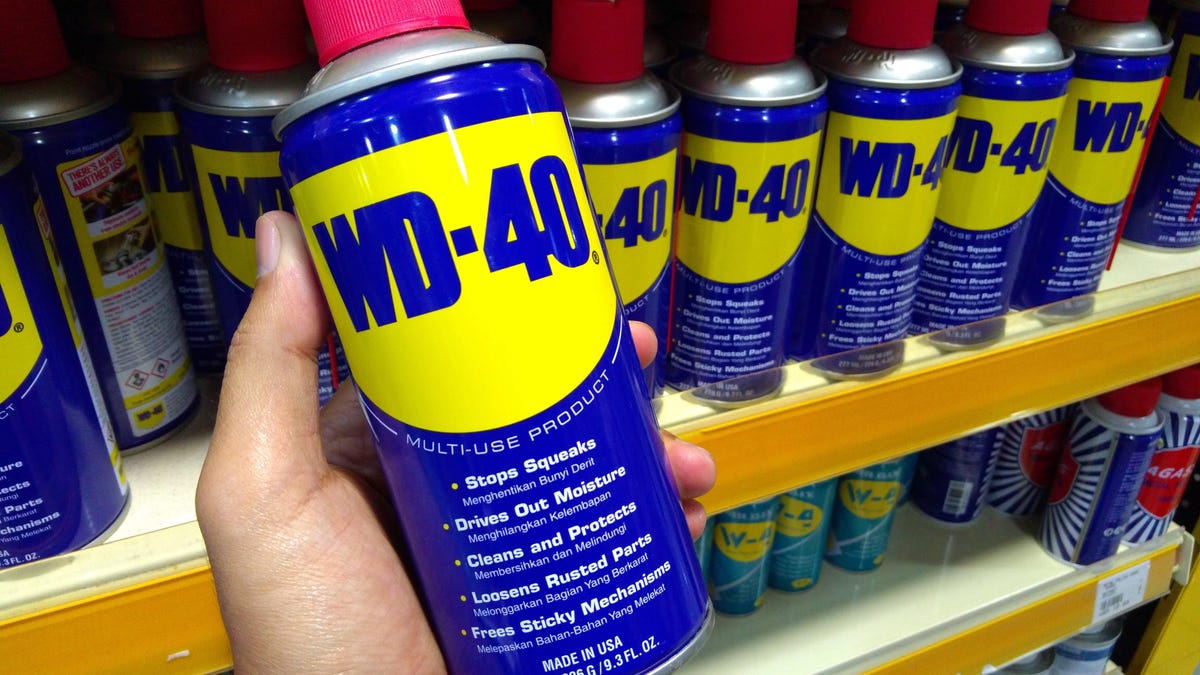Six Places You Should Never Use WD-40

WD-40 is a useful, versatile lubricant, but it is also a solvent and should never be used in some cases. WD-40 does not have the same viscosity as a traditional grease or oil and can erode some coatings and cause problems when used as a substitute. Here are some places where you definitely should never use WD-40.
Don’t use WD-40 on plastic
If you’re trying to grease the hinge on your sunglasses or remove the price tag from the surface of a plastic container, you might be tempted to get out a can of WD-40…but never use it on a clear plastic surface or on polystyrene or polycarbonate plastic.
Products commonly labeled as number 6 include things like toys, disposable cups and cutlery, and appliances like smoke detectors. Polycarbonate, known as No. 7, can be found in kitchen appliances such as refrigerators, clear packaging, plastic lenses, and safety gear. Due to the chemistry of WD-40, it can damage these plastics and ruin things like sunglasses with plastic lenses. When in doubt, it’s best not to use WD-40 on plastic.
Do not use WD-40 for woodworking.
WD-40 can dissolve wax coatings. If you use WD-40 to clean, be careful not to spill it on wood floors and furniture. Because wax creates a water-repellent barrier that protects wood products from water damage, it’s best to leave the wax where it is. Also, because WD-40 can penetrate the fibers of untreated wood, it is generally not recommended to use it on any wood surface, not just waxed.
Do not use WD-40 on natural stone.
Because WD-40 works well for many cleaning tasks, you might be tempted to try it on stone tiles or countertops. But natural stone is porous, and WD-40 should not be used to clean it – WD-40 can soak into the surface of the stone and stain it. In addition, many stone surfaces are waxed, and WD-40 can dissolve the wax finish.
Do not use WD-40 on surfaces where you prepare food.
Some appliance manufacturers recommend using WD-40 on stainless steel, but you should never use WD-40 on surfaces that will come into contact with food. While streak-free shine is a powerful motivator, WD-40 obviously shouldn’t be used…and while occasional food contact is not a big deal, surfaces where food comes in frequent or prolonged contact should never have WD-40. 40 on them.
Do not use WD-40 on electronics.
You should never use WD-40 on electronics, which can react with some plastics and attract dust and other particles. Spilling WD-40 on your smartphone or laptop can not only damage the screen, but also damage buttons or penetrate internal components. It is best to use a cleaner specifically designed for electronics.
Don’t Use WD-40 for Arthritis Pain
This should be obvious, but unfortunately it has to be said: Despite persistent claims to the contrary, WD-40 will not help relieve arthritis pain or creaky, stiff joints. While there are many ways WD-40 can help lubricate things, your joints won’t react to it in the same way as a stuck bolt. Human bodies definitely don’t use the same lubricant as engine parts, and medical professionals don’t recommend using WD-40 to treat any medical condition.